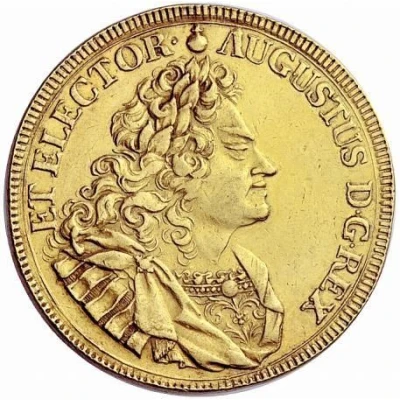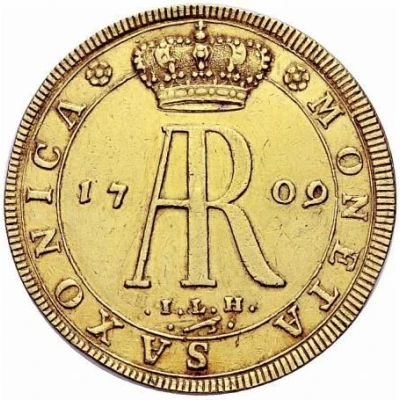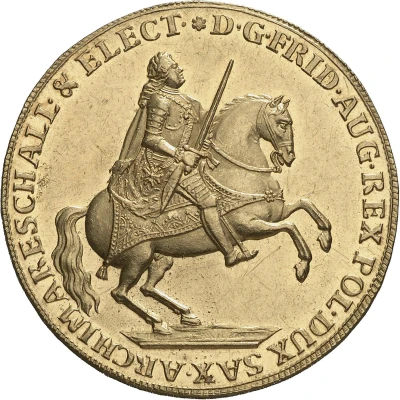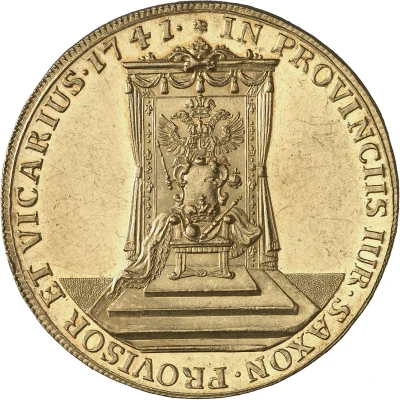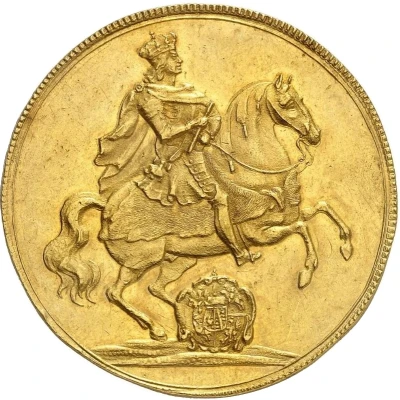
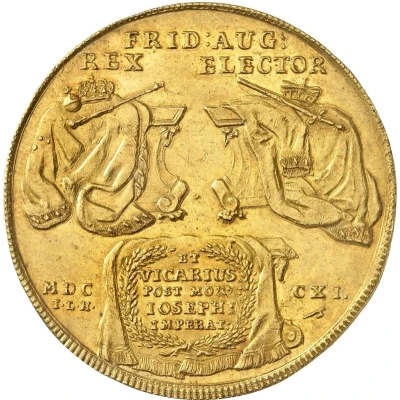

© Fritz Rudolf Künker GmbH & Co. KG, Osnabrück and Lübke & Wiedemann KG, Leonberg
10 Ducats - Frederick August I
1711 year| Gold (.986) | 35 g | - |
| Issuer | Electorate of Saxony (Albertinian Line) (German States) |
|---|---|
| Prince elector | Frederick Augustus I (Friedrich August I) (1694-1733) |
| Type | Standard circulation coin |
| Year | 1711 |
| Value | 10 Ducats (10 Dukaten) (35) |
| Currency | Thaler (1493-1805) |
| Composition | Gold (.986) |
| Weight | 35 g |
| Shape | Round |
| Technique | Milled |
| Orientation | Medal alignment ↑↑ |
| Demonetized | Yes |
| Updated | 2024-10-05 |
| Numista | N#264985 |
|---|---|
| Rarity index | 97% |
Reverse
Imperial regalia on tables at left and right, inscription above and below
Script: Latin
Lettering:
FRID : AUG : / REX ELECTOR
ET / VICARIUS / POST MORT : / IOSEPHI / IMPERAT
MDC - CXI
I H L
Interesting fact
One interesting fact about the 10 Ducats - Frederick August I 1711 coin is that it was minted during a time of great economic and political change in Europe. The coin was issued during the reign of Frederick August I, who was the Elector of Saxony and King of Poland. At the time, the Holy Roman Empire was dissolving, and the German states were in the process of forming their own independent governments. The coin's minting was likely a way for the Electorate of Saxony to assert its independence and showcase its wealth and power. Additionally, the fact that the coin was made of gold (.986) and weighed 35g suggests that it was a valuable and significant coin at the time of its minting.
